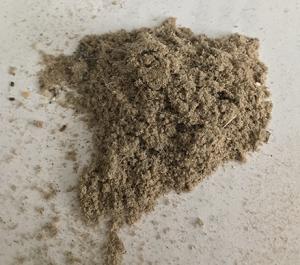Household Chemicals Disrupt Metabolic Function
Fire retardants widely used in fabrics and building materials inhibit thyroid function and promote fat cells

We spoke with Christopher D. Kassotis, Ph.D., (bio) NRSA Postdoctoral Research Scholar at the Stapleton Lab with Duke University about his research into the environmental causes of obesity. He recently presented his findings at the Endocrine Society.
Household Dust
“Household dust accumulates in every home. It is not a measure of cleanliness. Instead, it is the ongoing result of the slow, steady deterioration of fabrics and materials used to build and decorate the home and furniture.

“The composition of this dust includes chemicals that have been introduced to increase colorfastness, reduce bacterial growth (primarily mold), and increase fire safety. Other sources of chemicals are pesticides used in/near the house, chemicals brought in on clothes/shoes, chemicals on produce, food packaging-associated chemicals, those used in personal care products, etc
Fat Cell Growth
“We found in a study of 137 central NC households, all with adults living in the homes, that approximately 90% of the dust samples exhibited significant fat cell development – via either lipid accumulation/differentiation into mature adipocytes (~60%), or via proliferation of the pre-adipocyte precursors (~70%).
“We tested a range of concentrations for each dust sample and generally saw increasing activity with increasing dust concentration as you might expect. One unexpected thing was that we generally saw a higher percentage of active samples at lower concentrations when assessing the pre-adipocyte proliferation metric, relative to the lipid accumulation, suggesting that measurement of proliferation might be the more sensitive marker for metabolic disruption – though importantly, these two metrics did not always overlap. Some samples definitely exhibited increased proliferation and lipid accumulation, but many others exhibited only one or the other, suggesting overlapping but somewhat distinct mechanisms promoting these two effects.
Causative Chemicals
“Once we understood that household dust is positively associated with obesity, we looked at causative chemicals that might be driving the observed effects in our cell model.
“We assessed a group of flame retardants, including some old “legacy” brominated flame retardants (PBDEs), some newer replacement brominated flame retardants (as in the commercial Firemaster 550 mixture), and some of the newer replacement organophosphate flame retardants.
“Concentrations of each of these chemicals were significantly positively correlated with the extent of lipid accumulation by the dust extracts, suggesting they might be causative chemicals responsible for some of the observed effects. None were correlated with pre-adipocyte proliferation, highlighting the differences between these outcomes.
“Many of the chemicals significantly correlated with lipid accumulation were independently inactive in this cell model, suggesting we have either mixture effects from combinations of contaminants or co-occurring chemicals that are actually responsible for the effects.
Health Impact
“We looked at the health effects for adult residents living in those homes, including serum thyroid hormones and BMI.
“We found that the extent of fat cell development induced by the dust extracts was associated with the thyroid hormone levels of the residents living in those homes (greater fat cell development, higher thyroid stimulating hormone concentrations and lower free triiodothyronine and thyroxine (T3 and T4, respectively)).
Greater fat cell development was also associated with increased body mass index (BMI) in residents.
“The effects on thyroid hormone levels spurred us to look at thyroid hormone receptor inhibition as a potential contributory causative mechanism for the effects we saw.
- We started using a reporter gene assay in human cells to measure the activation and inhibition of thyroid receptor by these same dust extracts.
- We found that the extent of the dust-induced thyroid hormone receptor antagonism was strongly positively correlated with the extent of lipid accumulation in our fat cell model.
“This was further evidence of a thyroid-mediated effect, but we wanted to be sure. So, we selected a small subset of samples and performed a ligand recovery experiment and a siRNA knock-down experiment to reduce gene expression of the thyroid receptor.
- For the ligand recovery experiment, we essentially said, if inhibition of the thyroid receptor is causing the effects on lipid accumulation, can we counteract that effect by adding back some thyroid hormone to essentially compete out the inhibition. We found that we could, and saw a reduction in the dust-induced lipid accumulation with some T3 added to the wells.
- The siRNA knockdown used the same premise. If inhibition of the thyroid receptor (TR) causes these effects, would it prevent the dust-induced effects if we knock down the expression of TR in these cells? And again, we saw that we did, demonstrating a contributory causative role for a thyroid hormone receptor in the effects.




